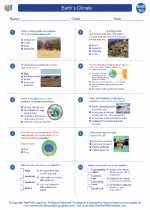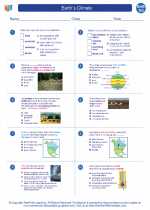Worms: An Overview
Worms are elongated, tube-shaped, and soft-bodied animals belonging to the phylum Annelida. They are found in various habitats, including marine, freshwater, and terrestrial environments. Worms play a crucial role in the ecosystem, contributing to soil health, decomposition, and nutrient cycling.
Types of Worms
There are several types of worms, including:
- Earthworms: Found in soil, earthworms help improve soil structure and fertility through their burrowing and feeding activities.
- Marine Worms: These worms inhabit marine environments and can vary widely in size, shape, and behavior.
- Parasitic Worms: Some worms, such as tapeworms and roundworms, can parasitize animals and humans, causing various diseases.
Anatomy of Worms
Worms typically have a simple body structure, consisting of a head, body segments, and a tail. They lack limbs and often move by contracting and elongating their bodies using muscles called circular and longitudinal muscles.
Reproduction and Life Cycle
Most worms reproduce sexually, although some species are also capable of asexual reproduction. They may lay eggs or give birth to live young, depending on the species. The life cycle of a worm often involves a larval stage, metamorphosis, and the development of adult characteristics.
Economic and Ecological Importance
Worms play a critical role in soil health and fertility. They help decompose organic matter, aerate the soil, and enhance nutrient cycling. Additionally, certain species of worms serve as a food source for other animals, contributing to the food web.
Study Guide: Worms
Key Concepts
- What are the main characteristics of worms?
- Describe the role of worms in soil health and fertility.
- Explain the differences between earthworms and parasitic worms.
Anatomy and Physiology
- Label the main body parts of an earthworm.
- Discuss the muscular system of worms and how it enables their movement.
- Compare the digestive system of earthworms with that of parasitic worms.
Life Cycle and Reproduction
- Illustrate the life cycle of a typical worm species.
- Explain the differences between sexual and asexual reproduction in worms.
- Discuss the ecological significance of worm reproduction.
Ecological Importance
- Describe the ways in which worms contribute to soil health and fertility.
- Explain how worms support the food web in various ecosystems.
- Discuss the potential impact of human activities on worm populations and their habitats.
By mastering these concepts, you will gain a comprehensive understanding of the biology and ecological significance of worms.
.◂Earth Science Worksheets and Study Guides High School. Earth`s Climate

 Worksheet/Answer key
Worksheet/Answer key
 Worksheet/Answer key
Worksheet/Answer key
 Vocabulary/Answer key
Vocabulary/Answer key
 Vocabulary/Answer key
Vocabulary/Answer key
 Vocabulary/Answer key
Vocabulary/Answer key
